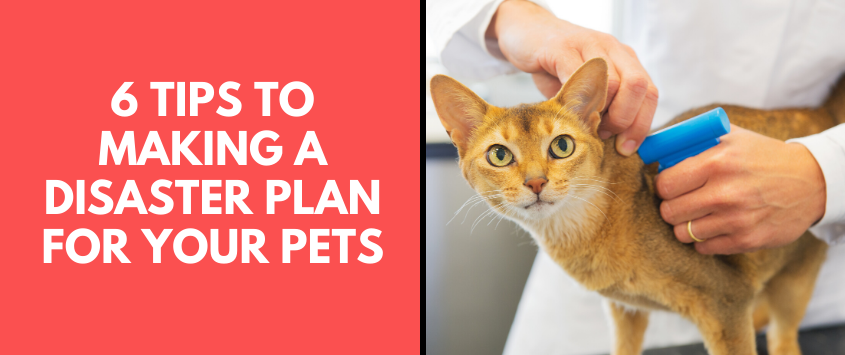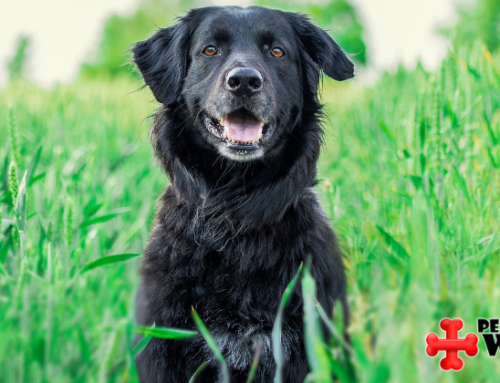6 Tips To Making A Disaster Plan For Your Pets
Pets should never have to look out for themselves during a disaster. Animals left behind during a disaster can get hurt or become sick, starve, drown from flooding or die. In fact, it’s estimated that 100,000 pets separated from their owners during and after Hurricane Katrina. Sadly, nearly 70,000 of those animals perished.
To prepare for a disaster it’s vital to have a plan. Our pet care professionals recommend the following six tips when planning for a disaster with your pet:
Get your pets microchipped
Microchipping your pets ensures you and your animal get reconnected. Be certain to keep the microchip registration current, and include, at a minimum, one emergency number of a friend or relative who lives outside of your nearby area.
Make sure your cats and dogs have collars
Keep all existing phone numbers on your animal’s identification tag. Identification on cats who remain solely indoors is critical. Odds are high your pets will flee a damaged home in the event of a disaster.
Plan a pet-friendly place to stay
Search ahead of time for out-of-town animal-friendly hotels or boarding centers, or come up with a housing exchange agreement with an out-of-town friend or relative. Do not leave your pets by themselves if you evacuate!
Use the buddy system
Trade pet information, exit routes and house keys with a select number of dependable neighbors, family members or nearby friends. If you’re trapped outside evacuation lines when an evacuation order comes, your friends or neighbors can evacuate your pets for you.
Set up an emergency kit for each pet
Load up on the items you may need during a disaster now so you do not get caught off-guard. Below are the essential items you should include in your pet’s disaster kits. Store your disaster kit supplies in a container that’s simple to grab.
* Food and water for a minimum of five days
* Medications and medical records
* Leashes, harnesses and carriers
* Up-to-date photos of you with your pets and descriptions of your pets
* Written information about your pets’ eating schedules, medical needs and behavior quirks, in addition to the name and number of your veterinarian
Arrange for temporary confinement
Frequently, physical structures, such as fences, walls and barns, don’t hold up during a crisis. Create a plan for keeping your pet safely confined. You may need a crate, kennel or tie-out.
Disaster plans aren’t important only for the well-being of cats and dogs. If you’re responsible for other types of animals, disaster plans for outdoor or feral cats, horses and farm animals are lifesavers. For more pet-related disaster preparedness tips, visit PetWow online or call us at 513-738-9691. Our team of experienced pet care professionals would love to assist you! For more pet care tips, follow us on Facebook, Twitter, Instagram, Pinterest or LinkedIn!





